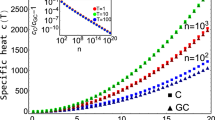Abstract
A quasi-chemical model of self-assembly among identical objects is proposed. The model rests on two main premises: (a) larger ensembles are more stable and (b) have slower rates of transformation, growth, and decomposition. These statements result from all paired interactions in the considered ensemble. This formulation of self-assembly is shown to be conducive to the formation of large ensembles with sizes distributed normally in a fairly narrow range, and with the concentrations of smaller ensembles being negligible. The existence of two critical points follows from the model. One is a critical concentration that initiates self-assembly in the system when exceeded. The other is a critical ensemble size that sets a threshold for the self-driven growth of ensembles in the system. The growth of ensembles nearly ceases at a point far from equilibrium, and the mean ensemble size and the ensemble’s size distribution are under kinetic control. Stable structures of this kind (with kinetic control of their organization) can serve as models for many natural self-organized systems.
Similar content being viewed by others
References
A. I. Rusanov, Micellization in Surfactant Solutions (Khimiya, St. Petersburg, 1992) [in Russian].
A. D. Pelton et al., Metall. Mater. Trans. B 31, 651 (2000).
J. W. Christian, Theory of Transformations in Metals and Alloys, 2nd ed. (Pergamon, Oxford, 1975), Ch. 1.
A. Sher et al., Phys. Rev. B 36, 4279 (1987).
D. A. Drabold and S. Estreicher, Theory of Defects in Semiconductors (Springer, Berlin, Heidelberg, 2007).
R. P. Sear, J. Phys.: Condens. Matter 19, 033101 (2007).
A. N. Gorban, H. P. Sargsyan, and H. A. Wahab, Math. Modell. Nat. Phenom. 6, 184 (2011).
M. Davilla, J. L. Ricardo, and A. J. Ramirez-Pastor, Surf. Sci. 603, 683 (2008).
M. Volmer and A. Weber, Z. Phys. Chem. 119, 277 (1925).
R. H. Fowler and E. A. Guggenheim, Statistical Thermodynamics (Cambridge Univ. Press, Cambridge, 1939), p. 350.
Ya. I. Frenkel’, Zh. Fiz. Khim. 7, 538 (1939).
J. B. Zeldovich, Acta Physicochim. USSR 18, 1 (1943).
Author information
Authors and Affiliations
Corresponding author
Additional information
Original Russian Text © G.V. Erlikh, 2017, published in Zhurnal Fizicheskoi Khimii, 2017, Vol. 91, No. 4, pp. 608–614.
Rights and permissions
About this article
Cite this article
Erlikh, G.V. Quasi-chemical model of self-assembly and the formation of kinetically controlled structures. Russ. J. Phys. Chem. 91, 634–639 (2017). https://doi.org/10.1134/S0036024417040057
Received:
Published:
Issue Date:
DOI: https://doi.org/10.1134/S0036024417040057




